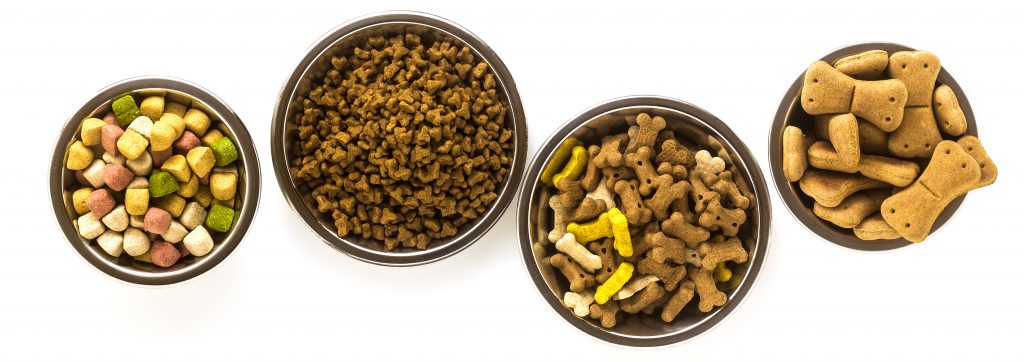
If you’re looking to provide your dog with the best possible nutrition, you need to be familiar with the basics. In this blog post, we’ll discuss 5 basic nutrition for dogs essentials and how to provide them in a healthy way. We’ll also offer tips on how to adjust your dog’s diet to accommodate specific health concerns, as well as provide a list of recommended foods for a variety of canine breeds. Whether you’re a first-time dog owner or simply want to brush up on your dog’s nutritional basics, this blog is for you!
Discussions about dog food types and brands often lead to lively and even contentious debate. Basic nutrition for dogs shouldn’t be so complicated! Dog owner loyalty to specific brands, nutrient assortments, and methods of feeding often reaches a religious fervor. Interestingly, facts have a difficult time replacing nutrition-related myth and bias. To everyone’s benefit, the science of canine nutrition has made huge strides in the past ten years and most of that newer knowledge is public information. As you explore the feedbag of facts and myths that surround the pet food topic keep an open and curious mind for sensible science-based facts. The foundation for intelligent discussion about canine nutrition requires an understanding of the basic principles.
Basic Nutrition For Dogs

To survive and reproduce all mammals require food composed of carbohydrates, proteins, fats, vitamins and minerals. Water, although not strictly a nutrient, is the medium in which nutrients, toxins, and energy are conveyed to and from body tissues. From the keratin structure in the hair to the delicate endothelial cells lining the chambers of the heart, every cell in your dog’s body is at the mercy of your choices of dog food. Read on to review the basic nutrients required by dogs and to see what foods best promote optimal health. Look at sidebar #1.
The Ingredient List…

Look beyond the appealing package graphics. The truth, and the nutrition, lies in the quality of the pet food ingredients, the ratios and interactions of those ingredients, and the digestibility and efficient delivery of the nutrients to the individual body cells. The best way to insure you are feeding a high quality product is to study the product labels. In descending order with the most prominent ingredient listed first the “Ingredients” list shows you what’s in the food. The list includes preservatives and even tells you if food coloring is present, (which clearly makes no sense being in dog food). The label also displays codes for date of manufacture or “sell by” dates. Take advantage of the customer service toll-free phone number any time you have a question.
Percentage of protein, fat, fiber and moisture is displayed in the Guaranteed Analysis but you’ll not find the percentage of carbohydrate. Carbohydrate level is revealed by deduction once the percentage of all the other ingredients is known. For many ingredients such as onion powder, cranberries, rosemary extract and other herbal substances there are no amounts or functional claims made. Your guiding light should be this: Whatever the ingredients and its percentages are, the product should make sense to feed to a meat-eating animal.
Carbohydrate…
Carbohydrate is fuel. During digestion it is transformed into various sugars. A primary source of energy derived from carbohydrate digestions is glucose, the high test, ready-for-action fuel for cell functions. Dogs and humans easily convert digested carbohydrates to fuel for cellular activity. An important fact to remember is that, unlike humans, dogs can easily convert proteins to energy when needed.
The good news about carbs… (See SIDEBAR # 2 for the bad news.)
Carbohydrates utilized in dog foods are relatively inexpensive and resist degradation over time. Some carbohydrate sources are useful as non-nutritive fiber in a diet recipe.
Sources of carbohydrate…
Fiber: Carbohydrate in food recipes in the form of fiber will be either nutritive or non-nutritive. If non-nutritive fiber to provide bulk (volume) predominates, though, it could dilute and bind other ingredients and degrade the food’s digestibility and function. Sources of fiber will be listed on the label as peanut hulls, pectin, gum, mucilage, cellulose, hemicellulose and lignin. Beneficial carbohydrates often supply a few amino acids, too. Common carbohydrates found in dog food include corn, rice, wheat, barley and oats.
Proteins…
Proteins are amazing complex molecules assembled from smaller amino acids. Proteins are vital for tissue growth and repair, for supporting structures, cell integrity, enzymes, body fluids and immune elements. Dogs can make hundreds of amino acids internally, but eleven must be preformed outside the dog and then consumed in the diet. These preformed amino acids are designated “essential amino acids”. (This is a bit confusing because even the internally created amino acids are essential for biochemical functions.)
Not all proteins are created equal in their amino acid combinations; and not all proteins are easily digested and useful as a nutrient. For example, leather is mainly protein but has zero digestibility for dogs as a food source. Corn is highly digestible as a carbohydrate source but is only about 8% protein while providing only four of the eleven essential amino acids a dog requires. Egg white protein delivers all 11 required by a dog!
Sources of protein…
A fact that fuels well-intentioned debate states: dogs utilize proteins from animal sources more efficiently than from plant sources. Eggs, blood, poultry, beef, lamb and fish muscle tissue and organ tissue such as kidney, liver, and heart provide great sources of highly digestible protein in dog food recipes. See sidebar #3.
Fats…
Fats are highly versatile components of numerous biochemical activities and structures. Numerous fats and oils are present in a variety of plant and animal food sources. Dogs can manufacture many lipids internally but have a need for a few to be ingested in the diet. Two essential fatty acids that break down into subunits for various metabolic functions are omega-3 and omega-6 fatty acids. (A third, arachadonic acid, is essential in a cat’s diet.) Fat is stored in a reservoir called adipose tissue, which insulates, cushions and gives shape to the dog’s body. Excess ingested fat and carbohydrate is stored in this fat reservoir to be withdrawn in times of need. Note: Extra protein not needed for daily amino acid requirements are not stored as fat.
Omega fatty acids are listed in many dog foods today because, although relatively expensive, they have well documented health-promoting effects in dogs and humans. The bad news about fats is that their quality can degrade when exposed to heat and oxygen from the air.
Sources of fat…
Chicken and other poultry, beef, pork, lamb and fish oils are good sources of animal fats. Fats in the form of oils derived from plants such as soybean, flaxseed, and safflower oil can contribute to a well-balanced dog food recipe. Interestingly, dogs do not develop the fat/cholesterol cardiovascular changes so prevalent in humans so you need not fear seeing egg yolks, chicken, beef, pork or lamb fat in an ingredient list.
Sources of omega-6 polyunsaturated fats are safflower, corn, cottonseed, and soybean oils.
Good plant sources of omega-3 fats include walnuts, canola or soybean oil, ground flaxseeds or flaxseed oil. Omega-3 fatty acids are often derived from fish oils from salmon, mackerel, halibut, and herring.
Herbs, berries, and other additions…
Do cranberries, blueberries, garlic, yucca, green tea extract and other additives really make a difference? Susan Wynn, DVM, author, lecturer, consultant and holistic practitioner in Acworth, GA, tells us, “Herbs and fruits are added for extra health promoting activity which range from the possible benefits of antioxidants in blueberries and green tea extract, to the potential medicinal effects of cranberry for urinary tract infections or yucca for flatulence. Whether or not these ingredients actually provide extra health promoting effects is open to question as their inclusion in diets is usually at very low levels, far below those used by herbalists.”
Vitamins and minerals…

Displayed in the ingredient list, vitamins and minerals are added to nearly all pet foods because they are inexpensive and readily obtained. Recommended amounts and ratios for dog foods are well established. Vitamins and minerals are usually added after any heat processing of the food.
In summary…
Now you know a few basic facts pertaining to good nutrition for dogs. The road to a more thorough knowledge of canine nutrition has many potholes and distractions. Stay focused on scientifically proven facts about dog foods and skeptically analyze what seems to be myth or hearsay. Valid nutritional principles lead you to conclusions that conform to the statement “Nutrition basics are based on common sense”.
Dogs are animals just like us and, as such, require the same essential nutrients to keep them healthy and happy. By following these five basic nutrition for dogs, you can ensure that your dog is getting all the nutrients it needs to maintain a healthy body and mind. Not only will your dog be happier and healthier, but you will also have more control over its health and well-being. If you have any questions or concerns about basic nutrition for dogs, don’t hesitate to let us know in the comments section below. We would love to help you out!
Frequently Asked Questions
What is the most common nutritional disease in dogs?
Obesity: The most prevalent dietary health issue in dogs and cats, obesity has an ever-rising number of health concerns.
What nutrients are toxic to dogs?
Xylitol, vitamin D, iron, and calcium are four often encountered elements in multivitamins that have the potential to be hazardous. Xylitol is a common ingredient in chewable, sugar-free vitamins, and it can cause symptoms of low blood sugar and possibly liver failure.
What are the main nutritional needs of a dog?
Your dog requires water, fat, protein, carbohydrates, vitamins, and minerals, which make up the six basic nutrients.






